CALHOUN'S POOR FARM - There Was No Place To Go
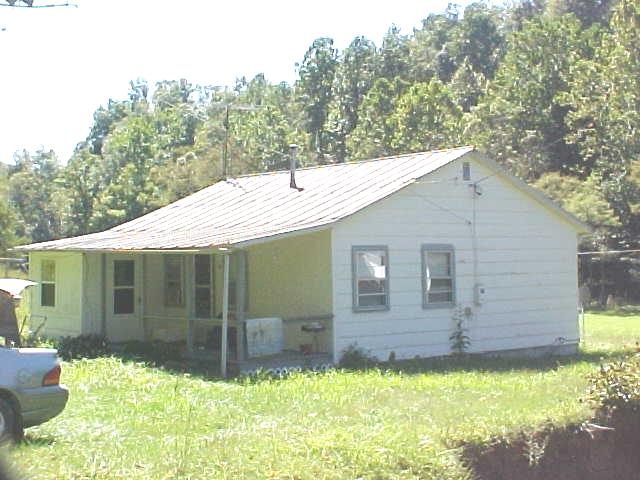
Front section of Poor Farm House still exists along Bull River Road
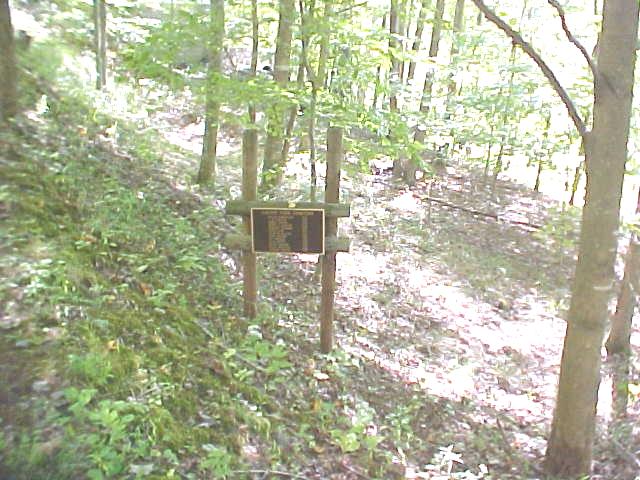
Poor farm has pauper cemetery with little flat land, no personal monuments
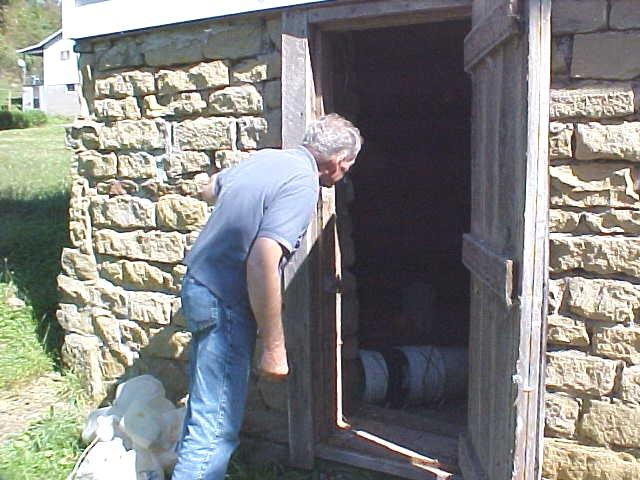
Otis Miller looks inside original stone-cut cellar, milk, butter, canned items and pickled corn was kept
By Bob Weaver July 2003
When there was no place to turn, Calhoun's Poor Farm offered haven to dozens of men, women and children for over sixty years. The 100 acre facility on Bull River was established about 1875, a working farm with some flat land for gardens, hay and a house.
Today, the front part of the poor farm house has been moved to a nearby lot, but the old dug well and the stone cellar are still on the original site, in more recent years owned by Arvin Yoak.
Bull River resident Bill Johnson, now 76, said his great-grandparents, Adam and Sarah Coberly Westfall, were the first caretakers. "They ran the place shortly after the Civil War up 'til 1900," he said. The 1880 census of Calhoun lists "paupers" residing at the farm:
Elizabeth Ervin, 75; Jane Copen, 28; Casinda Robinson, 30; Roxy Robinson, 4; Lawson Robinson, 3; Lula Robinson, 3; Mary E. Boner, 29; William Boner, 10; Washington Boner, 9; Oda E Boner, 5; Harvy Boner, 4; Edna Boner, 2; John Boner, 6-12 mos.; Hencen McCune, 9; Ema Johnson, 6 and Lafyette (?), 4.
Bill Johnson's dad, well-known Calhouner and Bull River citizen, Karl Johnson, said when residents died they would make a pine box for their trip up the hill to the pauper cemetery. Marshall Plant made the coffins and lined them in black. "Never used a funeral home, but they would say a few words over them."
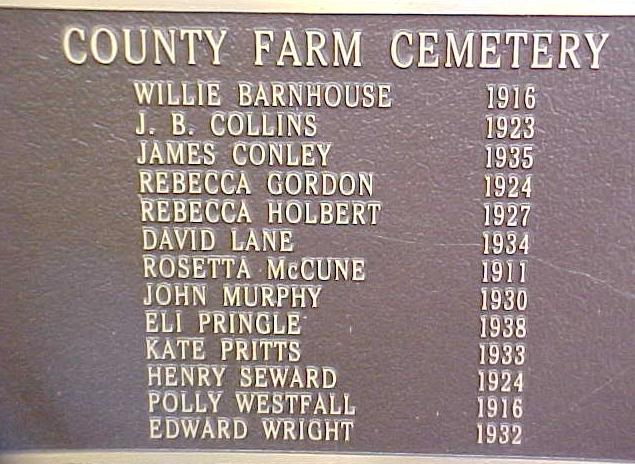
A bronze plaque remembers paupers buried there
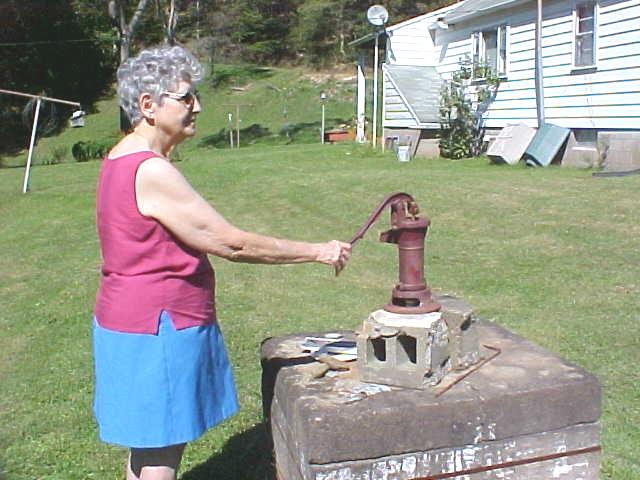
Jean Yoak Miller says dug well "still works"
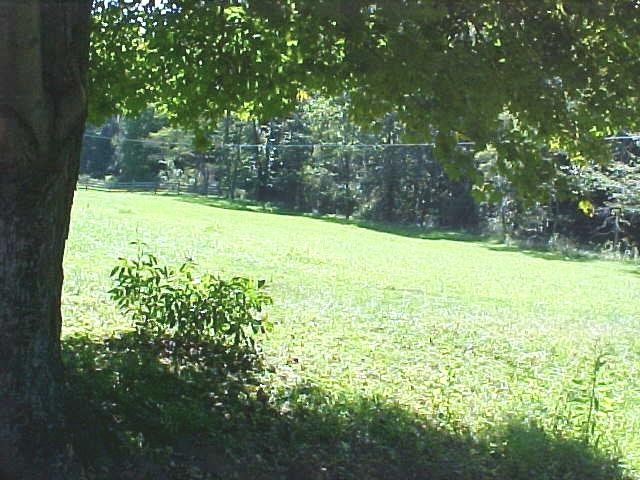
100-acre farm had some bottom land on which food was grown
Established by the Calhoun County Court, the "L" shaped house looked something like an old-fashioned motel, said Willa Lea Yoak Kelley, with a long shed-like structure attached to the back for living quarters. "Usually there were five or six people at a time," said Kelley. who remembers the structure had a porch on the front and down the side.
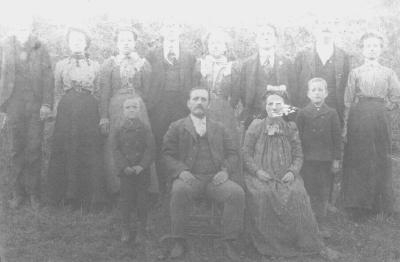
John McFarland and Missouri Brown Yoak Ball
ran the farm in early
1900s, shown with their ten children (Photo Adrian Ball)
Adrian Ball said some residents came to the table and ate "family style," while meals were carried to others. Ball has been trying to collect history on the farm for several years. His grandparents, John McFarland and Missouri Brown Ball, operated the farm in the early 1900s. They had ten children, themselves.
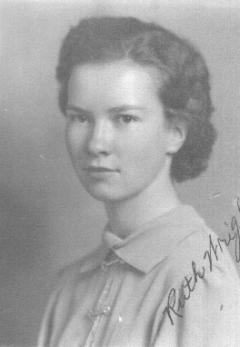 Ruth Wright, 83 (Left) of
Mt. Zion, said her parents took the job in 1926, when she was seven years old.
Ruth Wright, 83 (Left) of
Mt. Zion, said her parents took the job in 1926, when she was seven years old.
Auzie and Lennie Kimble Wright kept it going until it was closed about 1938. Ruth grew to adulthood at the farm with her four siblings, going to the Bull River school and then graduating from Calhoun County High School in 1937.
"You understand these were people who had no one to look after them. We raised everything on those flat bottoms for them and our family. The county, about once a year, would furnish 100 pound bags of dried beans, buckets of lard and bags of flour."
"I helped cook and served them their meals. They ate well," she said. "The county bought them their clothes."
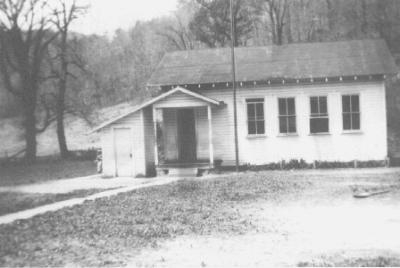
Bull River School, attended by Ruth Wright,
the second school built on
the creek (Photo Adrian Ball)
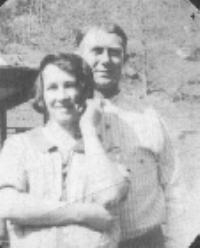 Auzie and Lennie Kimble Wright, (Left) ran the farm for
many years.(Photo Ruth Wright)
Auzie and Lennie Kimble Wright, (Left) ran the farm for
many years.(Photo Ruth Wright)
Ruth said once or twice her family had to move off the farm because county politics changed. "When the Democrats got back in, they would re-hire my dad and mother," she said.
"I think my mother literally worked herself to death there. She died when she was only 43."
"People would come and go, but I remember many of them," Ruth said.
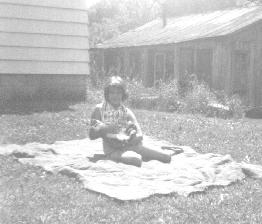
1960s photo of original house with Kathy Kelly in yard (Photo Adrian Ball)
She recalled the tragic death of a resident name Kate Pritts, who set herself on fire inside her small room. The woman often had a "spell" just after she climbed from bed. "My dad and mom used buckets of water from the rain barrel to douse the fire," she said.
"Old Eli Pringle would talk about the Pringle Tree. Then there was Jim Conley, a deaf-mute, and Dave Lane, a blind man."
During the "Great Depression" the farm had extra residents, often doubling them in the small rooms. "My dad and mom took care of four orphans for a year. Some of them are still living in the area."
Henry Barnhart, who was mentally retarded, was the last remaining resident. He was moved to Huntington, where he lived out his days.
Ruth said the poor farm years was a time when everyone had to work, sometimes long hours, particularly during the depression.
"It was charitable work, and it helped a lot of people survive," concluded Ruth.